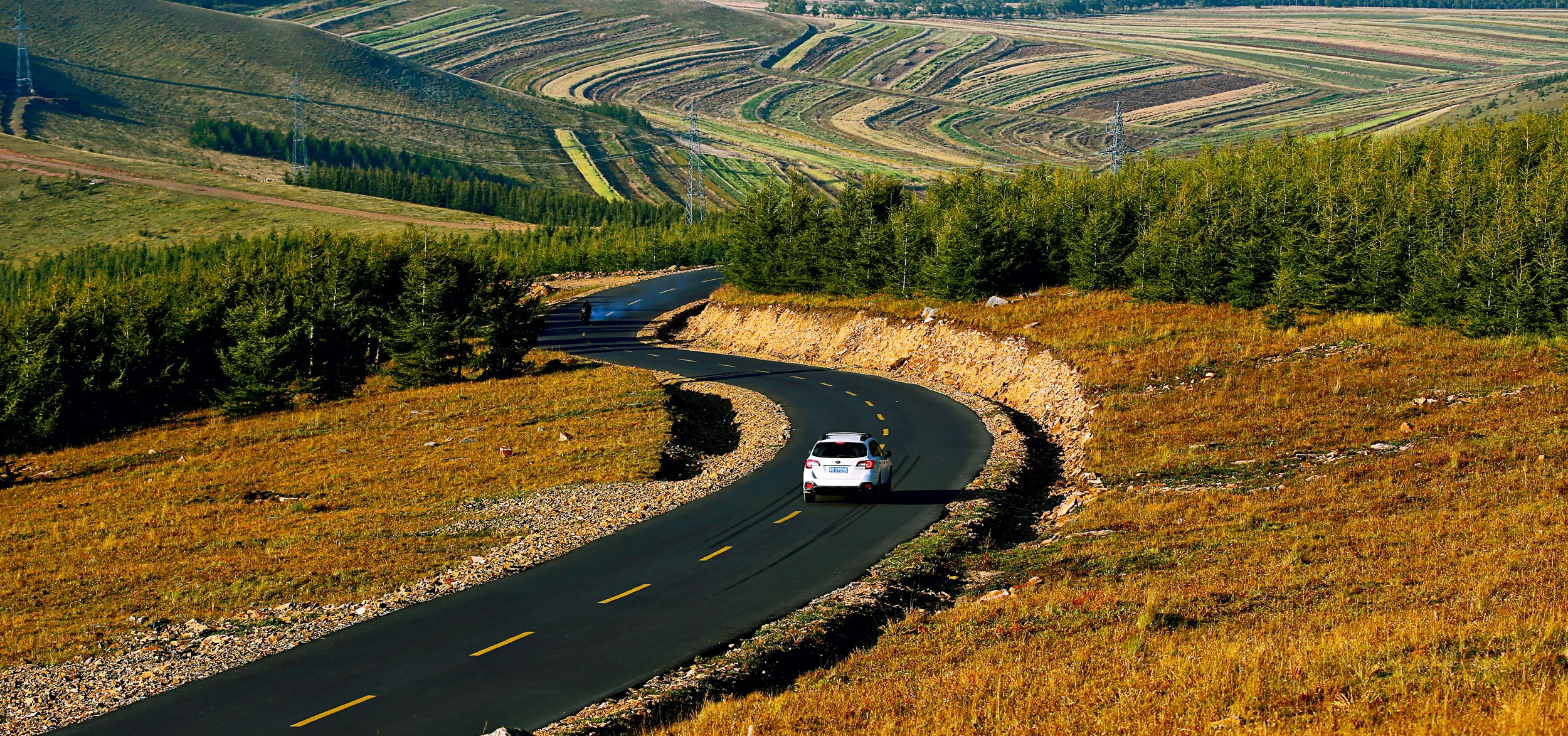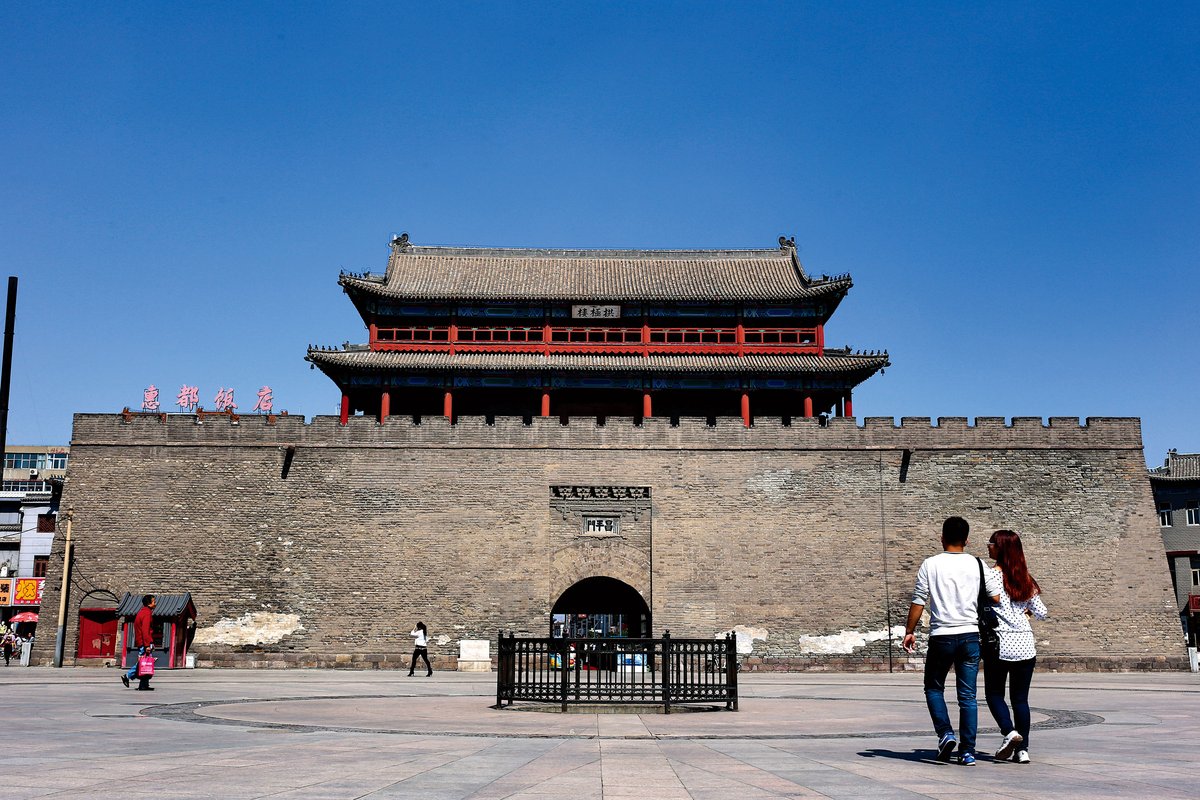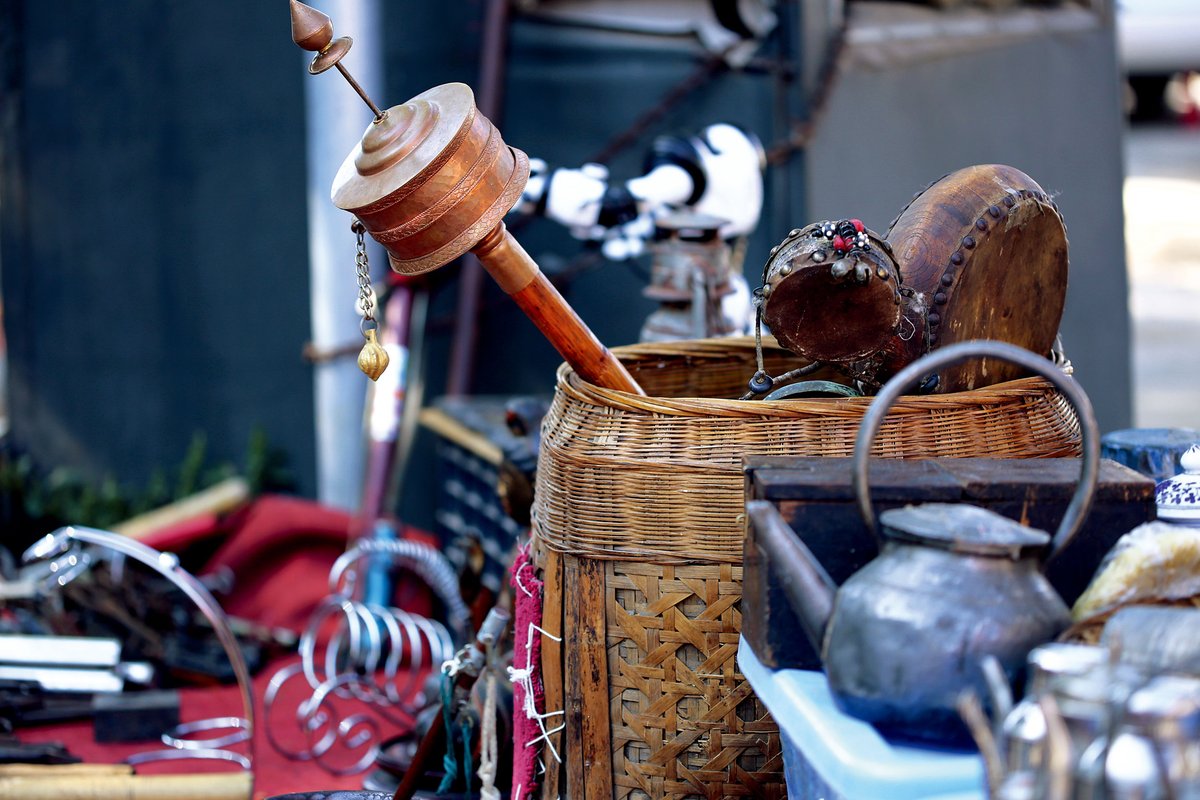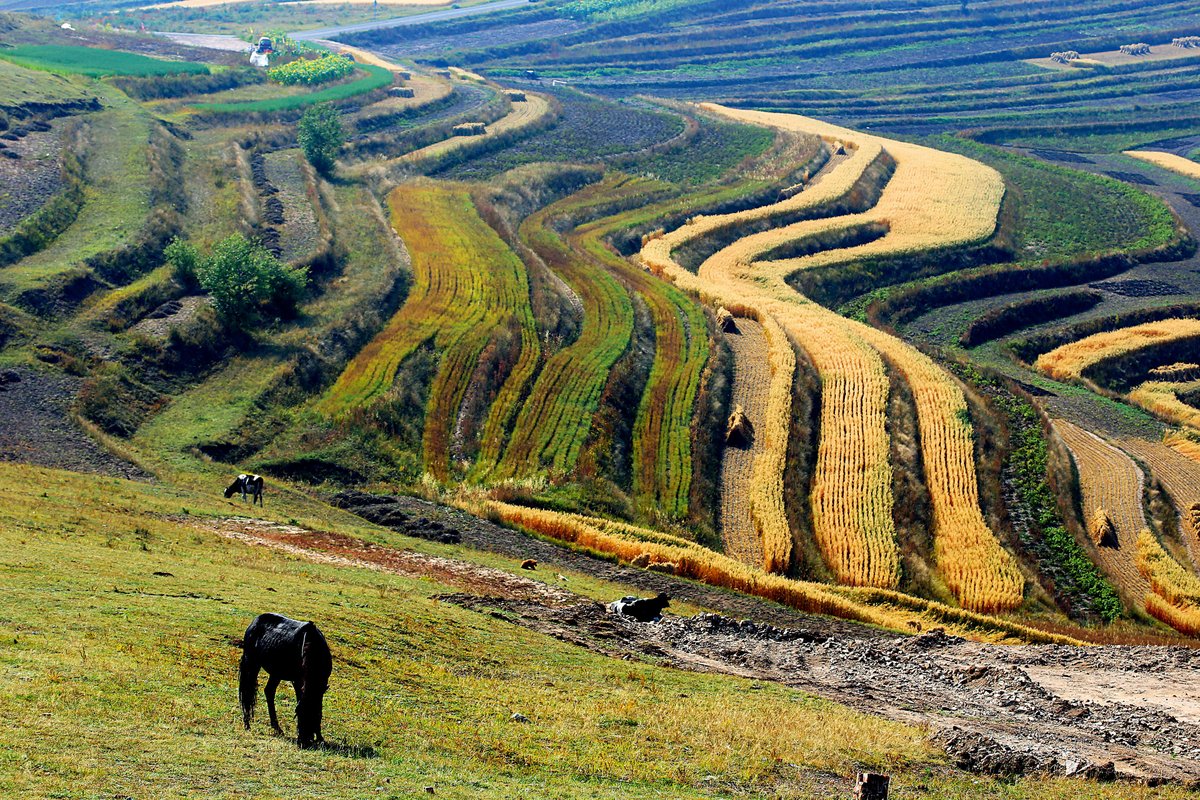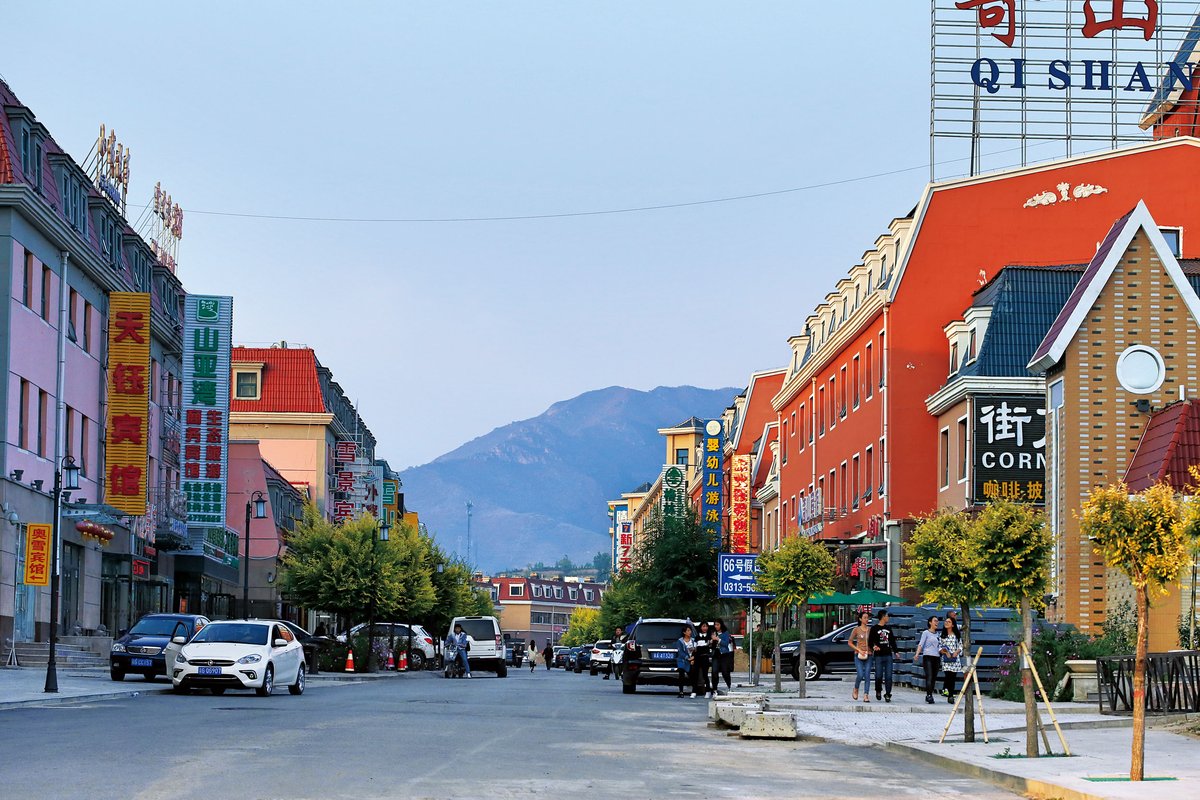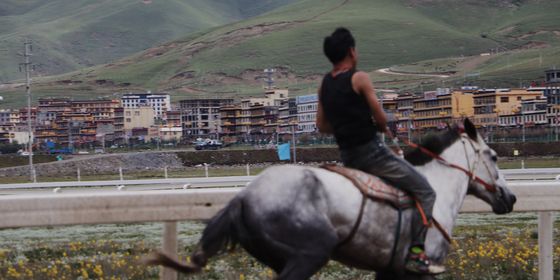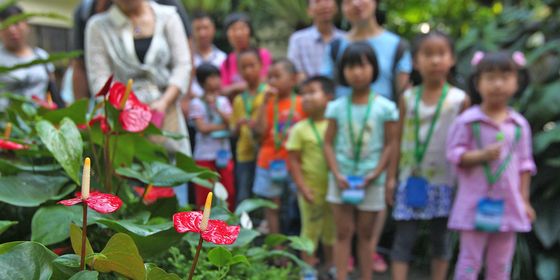The Olympics put it on the map, but there’s more to see now in Zhangjiakou and its nearby northern charms
Most travelers—even a lot of Beijingers who live only 180 kilometers away—can easily confuse Zhangjiakou with better-known tourist destinations with similar names, like Zhangjiajie or Zhangjiagang. The fact that the city belongs to Hebei province doesn’t help improve expectations, as it is a province widely known as a world of steel factories, a gloomy concrete desert with legendary air pollution.
Zhangjiakou was only very recently lifted out of its comfortable obscurity as a northern manufacturing hub: more specifically, on July, 31, 2015, when it was announced that Zhangjiakou would co-host the 2022 Winter Olympics with Beijing. Finally, Zhangjiakou was on the map.
In fact, if you want to get away from the horrific din of Beijing for a weekend, then Zhangjiakou might be an ideal choice, at least for the time being. Once you are off the notorious traffic hellscape that is the Badaling Expressway (which might be the least enjoyable part of the whole journey, as you slowly inch your way forward, dwarfed among giant trucks), you are on a constant, slow climb that extends all the way northwest to Inner Mongolia. Zhangjiakou is the first city you encounter on this route, which connects the lowlands of Beijing to Inner Mongolia like a staircase. The landscape is the opposite of the Hebei city stereotype so many assume, with its smooth, rolling hills and vast prairies.
Despite its recent fame, the city seems in the grips of an identity crisis. Zhangjiakou is comprised of six districts and 13 counties, covering an area of over 2,080 square kilometers, and due to this vastness, it’s a hard landscape to describe. Locals often divide Zhangjiakou up by referring to its plains area as “under the bank”(坝下) and its plateau area as “on the bank”(坝上).
Zhangjiakou’s government has already set off on a long journey to rebrand itself, largely by borrowing glamour from its already established reputation. It has tried branding a prairie music festival held in Zhangbei county (张北县) as “China’s Woodstock,” and the ski venues in Chongli county(崇礼县) as “China’s Davos.” However, Zhangjiakou doesn’t need the borrowed platitudes of government slogans—it’s already got a brand. Xuanhua (宣化), our first stop after entering Zhangjiakou, took us back in time.
The Winter Olympics are all well and good, but Xuanhua has played more important roles in history. In 1420, the Yongle Emperor moved the Ming Dynasty’s (1368 –1644) capital from Nanjing to Beijing, and Xuanhua became a critical location for border defense against the Mongols in the north. Although today it’s just a district within the larger city, Xuanhua used to be a critical town managed directly from Beijing, where highly-ranked princes stationed their finest troops. With this mission came a formidable city wall with nine gates and dozens of fortresses—an important juncture on the Great Wall. As time passed, Xuanhua lost its previous utility and the Great Walls, fortresses, and courier stations were all left to crumble.
Today, Xuanhua’s central area doesn’t look much different from a picture taken 100 years ago. The bell tower and the drum tower are well-preserved, standing opposite each other with a distance of about a kilometer, connected by a market street where peddlers sell fruit, snacks, and antiques. The antique stalls hint at a Manchurian lifestyle—the most common pieces of merchandise are reddish copper pots and a kind of slender tin container for heating wine, which were common in the in late Qing (1616 –1911) and Republic (1912 –1949) periods.
One can also find traces of Tibetan Buddhism in Xuanhua. Tibetan Buddhism was once promoted by Qing royalty, but almost all of the monasteries were dismantled or relocated to Inner Mongolia after the founding of the PRC. Tibetan Buddhism has thoroughly lost its hold on this area, but here travelers can still pick up ancient books and scrolls explaining Tibetan Buddhist charms and sutras from a forgotten past.
The town itself is already in a state of restlessness over the coming Games. Xuanhua is being constructed, revamped, and polished with such fervor that locals aren’t quick to give directions. One man, when asked, said, “The roads have been reconstructed so much that we’re really not sure what road to take.”
A five-minute drive from the bell tower, a new high-speed railway station is under construction. With the Chinese government’s typical efficiency under certain circumstances, the new high-speed railway will be built from Beijing to Xuanhua just for the convenience of the Winter Olympics. That old city wall that once protected the south from invading Mongols is also being revamped. Today, when you stroll through town, you can still see remnants of the old wall. It consisted of an inner mud-based core and an outer facade of bricks. The bricks were removed by residents in the 1950s to build houses under Mao Zedong’s call to dismantle ancient city walls. However, the naked mud wall has proved surprisingly resilient; still standing, tall and stubborn, after so many decades of weathering—natural and political. For the past few years, the Xuanhua government has been meaning to rebuild the wall and the gates, but reconstruction efforts have been sporadic. But, now that the Winter Olympics are on the horizon, the project has been put in full gear.
“Xuanhua is an ancient town, no matter how things change,” a young woman told us while we stood atop the bell tower and stared at the market below. “I’m a Xuanhua local, and this part of the town hasn’t changed...As long I can come over and look at these ancient buildings, I feel at peace and at home.”
We left Xuanhua with a trunk loaded with grapes, watermelons, and dates—the differences in day and night temperature in Xuanhua are supposed to make fruits taste particularly sweet. Then, we headed for downtown Zhangjiakou.
At first glance, it is everything you might expect from a third-tier Chinese city: boring and ugly. That is, until we reached the old part of the city, Puzili (堡子里). A pu is a fortress close to the Great Wall, and Zhangjiakou, originally built in 1429, was but one of many pu managed under the Xuanhua government. It also contained a horse market where Mongolians and the Han traded. By the Qing Dynasty, Zhangjiakou had become a prosperous export and import center where merchants of the Qing traded with Mongolians and Russians throughout the year. It was the biggest inland trade center in China, and even a gate, the Dajingmen (大境门), was opened on the Great Wall of the Zhangjiakou section. Also, in 1905, China’s first railway, the Jing-Zhang Railway (京张铁路), was built to connect Beijing and Zhangjiakou. Puzili was what remains of this commercial boom.
It is surprising to see such an expansive, well-preserved ancient town, with its temples and ancient schools, still functioning in such an lifeless, plain-looking city. Entering Puzili is like watching the world get colored in. You start in the city—black-and-white, quiet and cold—and then suddenly everything jumps to life in vivid color and lively conversation. The ancient school in Puzili is called Lun Cai Academy (抡才书院). On one side of the yard is a worship hall for Confucius. He smiles humbly under that embarrassing crown (obviously a new statue), while in the classroom opposite to him children read out from The Analects with long drawls.
Old people seem to enjoy the outside of their alley apartments, playing cards and reading, willing to offer advice to the odd tourist. Indeed, tourists are scant in this part of the city, despite the charms of Puzili. For most, it’s simply a stop on their way to the prairies of the north.
We arrive in Zhangbei county at night. While most know little about Zhangjiakou, Zhangbei itself is well-known to Chinese young people for its yearly music festival in August. Tourism is growing in Zhangbei, albeit in an unruly way, resulting in expensive food and lodging throughout the summer. Other than the music festival, the other draw to Zhangbei is the “Heavenly Highway of the Prairie”(草原天路).
This highway is a winding two lane road that connects Zhangbei and its neighboring county, Chongli. It can be found in Chinese travel blogs and is often referred to as “China’s Route 66”. It lives up to the hype. Most drivers say it takes 12 hours to drive the 120-kilometer-long highway. Travelers might be surprised to learn that it wasn’t built for this purpose; it was supposed to be a way of transporting windmills across the country.
Wind-power has exploded in the region over the past few years. In 2008, the Chinese State Council announced that the government would invest 4 trillion RMB in China’s infrastructure to boost the slowing economy. A few years ago, encouraged by the policy, state-owned enterprises and the private sector started to invest heavily in electricity plants, especially windmills. Thousands of giant white windmills mushroomed on the Zhangbei Prairie, and the so-called “Heavenly Highway” was built to ship these massive machines into its very depths. But, the stimulus soon died, and the local plants didn’t have enough capacity for the output of all those windmills. Standing tall to this day, at least 30 percent of these windmills aren’t operating.
When travelers discovered the hidden beauty of this abandoned road to nowhere, Zhangbei was revived in a way no one expected. You never get bored driving this road—a path through woods, grasslands, terraces, rolling hills, and valleys, and in autumn the leaves turn gold and red. On most of the terraces along the way, flax seeds grow, and in harvest season, farmers tie crops into rolls and stack them at even distances on the terraces. From afar, it looks like strings of necklaces. The skyline is permanently outlined by windmills, which add a grotesque, industrial beauty. Here you can also see the various segments of the Great Wall—usually reduced to mere mud mounds and shattered rocks running along a mountain ridge. When you step on it, unlike other popular wall locations, you can feel thousands of years of history.
The only thing missing from this vast prairie is cattle. You might see the odd sheep or horse, but herding is strictly forbidden here. In Inner Mongolia to the north of Zhangbei, grasslands are being rapidly devoured by desert, and the green gives way to the yellow sand of desertification. Beijing has suffered enough sand storms, and it cannot afford to have Zhangbei’s grasslands in danger.
The road is about to come to its end of service for the year; because of its high altitude, the road will be frozen after mid-October, the tourists will leave, and the hilly grasslands will again exclusively belong to the villagers who know how to get around during the five months of winter. Before the frost and snow falls, if you can stick on the highway, it will take you to Chongli county.
Chongli is surrounded with forests that are ski venues in winter. It will also become the actual site of all ski events for the 2022 Winter Olympics. The name Chongli is very Confucian—literally meaning “respect for rituals”. However, on entering the town, you’ll be impressed by the way streets are built in a contrived European style. Welcome to “China’s Davos”, or “The Home of Skiing in China”, as it advertises itself.
In those hotels and restaurants that try their best to look fancy, waitresses and staff who are permanently tired and impatient seem to loath their customers. They’re still trying to foster that Olympics spirit as much as they can in an area that seems like an unlikely spot, at the moment unprepared for the coming onslaught. Like everywhere else in Zhangjiakou, Chongli is building new expressways and a new airport. The government of the county promises that, by 2022, it will take just one hour to get here from Beijing. The town, may not yet look welcoming or excited about its Olympics future, but with China’s incredible pace of transformation, there’s no telling what it will look like in a few years, and whether visitors will still have to the chance to see the area in all its strange, rural glory.
Road to Winter is a story from our issue, “The Brain in Pain.” To read the entire issue, become a subscriber and receive the full magazine. Alternatively, you can purchase the digital version from the App Store.





